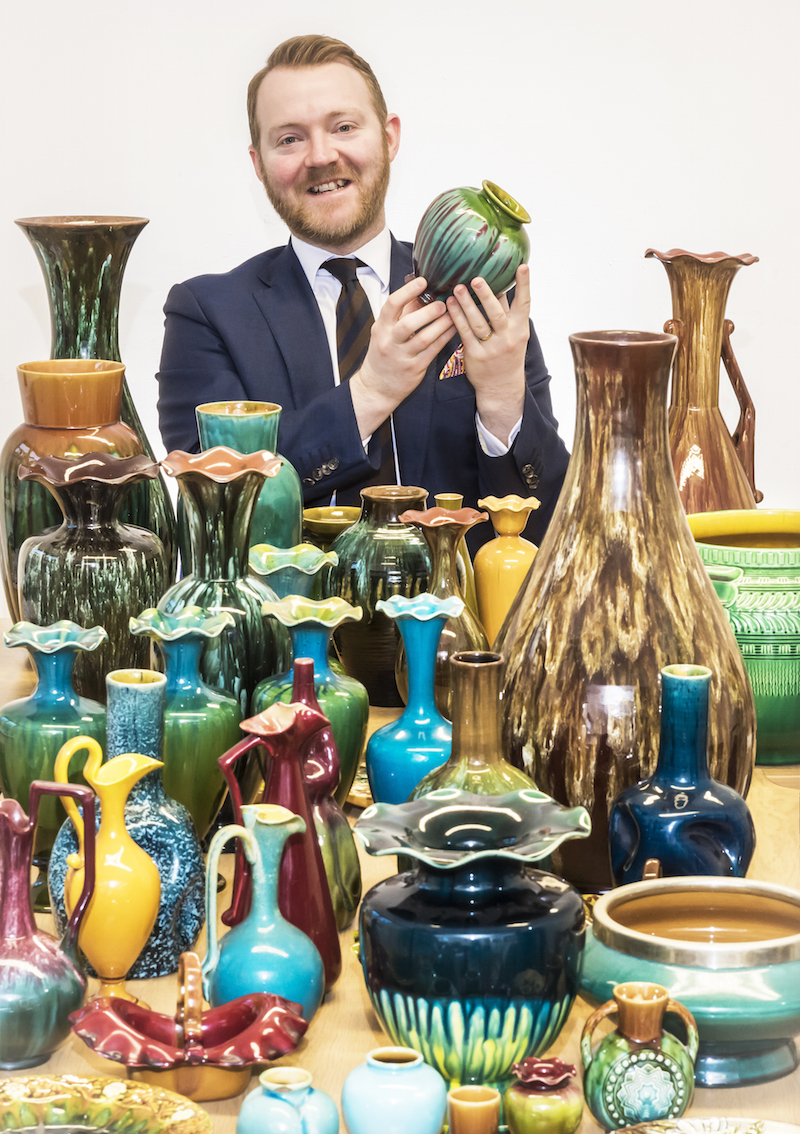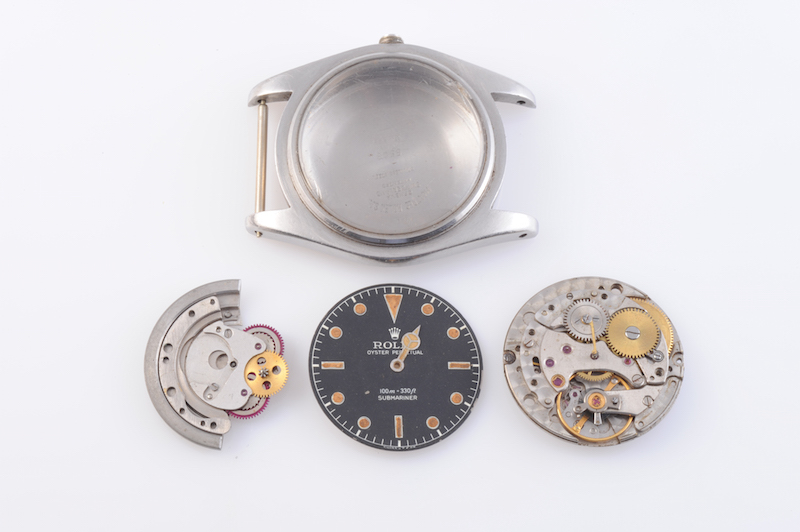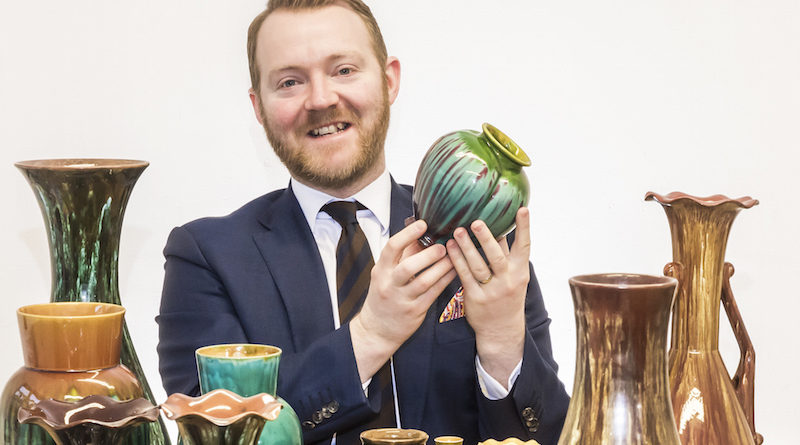Antiques Trade Talks – David Elstob of Thomas Watson Auctioneers
 David Elstob is the director of Thomas Watson Auctioneers in Darlington. We caught up with him to chat about his life in the antiques trade and share some thoughts on the current market
David Elstob is the director of Thomas Watson Auctioneers in Darlington. We caught up with him to chat about his life in the antiques trade and share some thoughts on the current market
Why do you think people should love antiques?
Owning an antique gives us the opportunity to have a personal ‘brush’ with history and offers a unique insight into the lives of people who have gone before us, whether it’s a needlework sampler made by a young Victorian lady or a brass miners’ lamp that saw action down the pit. It is also the most fun form of recycling I can think of!
What areas/items are currently selling well?
We are seeing an increased demand for ‘brown’ furniture, although it is still someway away from what it was.
Designer classics continue to excel, as do watches and medals. In a recent sale we had a rare Rolex Oyster Perpetual Submariner sports watch dating from 1958 – the so-called James Bond model on account of it appearing in no less than eight 007 movies. It was valued between  £1,000 and £2,000 but was eventually knocked down for an eye-watering £4,600 despite being in an incomplete form.
£1,000 and £2,000 but was eventually knocked down for an eye-watering £4,600 despite being in an incomplete form.
What do you think are the current ‘good investment’ items – ones to watch?
I generally advise against buying something purely as an investment. You should buy an object because you really like it and will enjoy displaying it in your home; that way if it increases in value then it’s a bonus. However, if you really pushed me then I would say good quality period furniture is currently worth looking at.
What antiques do you have at home?
I have a nice collection of rugs and pictures, but my favourite acquisition is a pair of Swedish glass lamps, which look like huge blocks of ice. They date from the 1970s.
What do you think will be the antiques of the future?
I say this through gritted teeth, but probably games consoles, mobile phones and gadgets from my era!
How is the industry changing and what will it look like in the future?
There have been huge changes in the last decade due to the fact that we now live in a much more ‘global’ community. At Thomas Watsons we have a large proportion of online bidders, often with buyers present from all over the world. Only today I knocked down a set of sterling silver mint edition ingots by John Pinches in celebration of 1,000 years of the British monarchy to a bidder in Australia.
Looking further ahead, we may see a decline in the traditional ‘general’ sale and it will be all about specialist sales types. Who knows, the physical auction house may eventually become extinct and an online presence may be all that is required?!
Tell us some trade secrets – what are your top tips for buying antiques?
If you decide to start collecting in a particular area then it is important to buy your first piece from a respected dealer. That way you will know that you not only have something which is the genuine article but hopefully it will also be good quality and you will be able to gauge future purchases against it.
What antiques/artworks would you buy if money were no object?
I would do the Grand Tour and return with great treasures!
You’re down to your last 50 quid – what antiques/art would you buy?
 I love the distinctive 19th-century Linthorpe Art Pottery, which was made in the nearby town of Middlesbrough for a period of only ten years between 1879 and 1889. We occasionally get pieces turning up at our sales, so I would see if I could afford the odd bowl or vase. However, I doubt my £50 would stretch to a piece designed by the renowned Christopher Dresser who, for a short time, was Art Superintendent at the Pottery!
I love the distinctive 19th-century Linthorpe Art Pottery, which was made in the nearby town of Middlesbrough for a period of only ten years between 1879 and 1889. We occasionally get pieces turning up at our sales, so I would see if I could afford the odd bowl or vase. However, I doubt my £50 would stretch to a piece designed by the renowned Christopher Dresser who, for a short time, was Art Superintendent at the Pottery!
Where are your favourite antique hunting destinations and why?
I recently went on holiday to Haye-on-Wye in Herefordshire, which is not only known for its bookshops but is also a hot spot for antiques and vintage items. There’s a trendy vintage outlet called The Old Electric Shop, which has good mix of all things and the Aladdin’s cave of Goosey Ganders specialises in cut-glass chandeliers and lamps. There’s also plenty to see nearby, including Dore Abbey and the Black and White Trail, which takes in some picturesque historic villages.
What are some of the biggest mistakes that buyers make?
Assuming that something is perfect! Antiques have blemishes and that is often part of their provenance – and charm.
Do antiques appeal to young buyers and, if not, how can the industry reach out to them?
They appeal to some but not enough, which is a shame given that the quality and workmanship of antique items invariably outstrips anything that can be bought on the high street and at a much lower cost.
Antique items also lend individuality to any home and can easily be displayed alongside contemporary items to great imaginative effect.
I think we should do more to interact with younger buyers. Most will never set foot inside a saleroom, so we need to meet them on their own turf and make the experience of buying online a great one. Descriptions need to be accurate, with multiple catalogue images, accurate and readily available condition reports, shipping arranged and payment made within a few clicks of a button!


